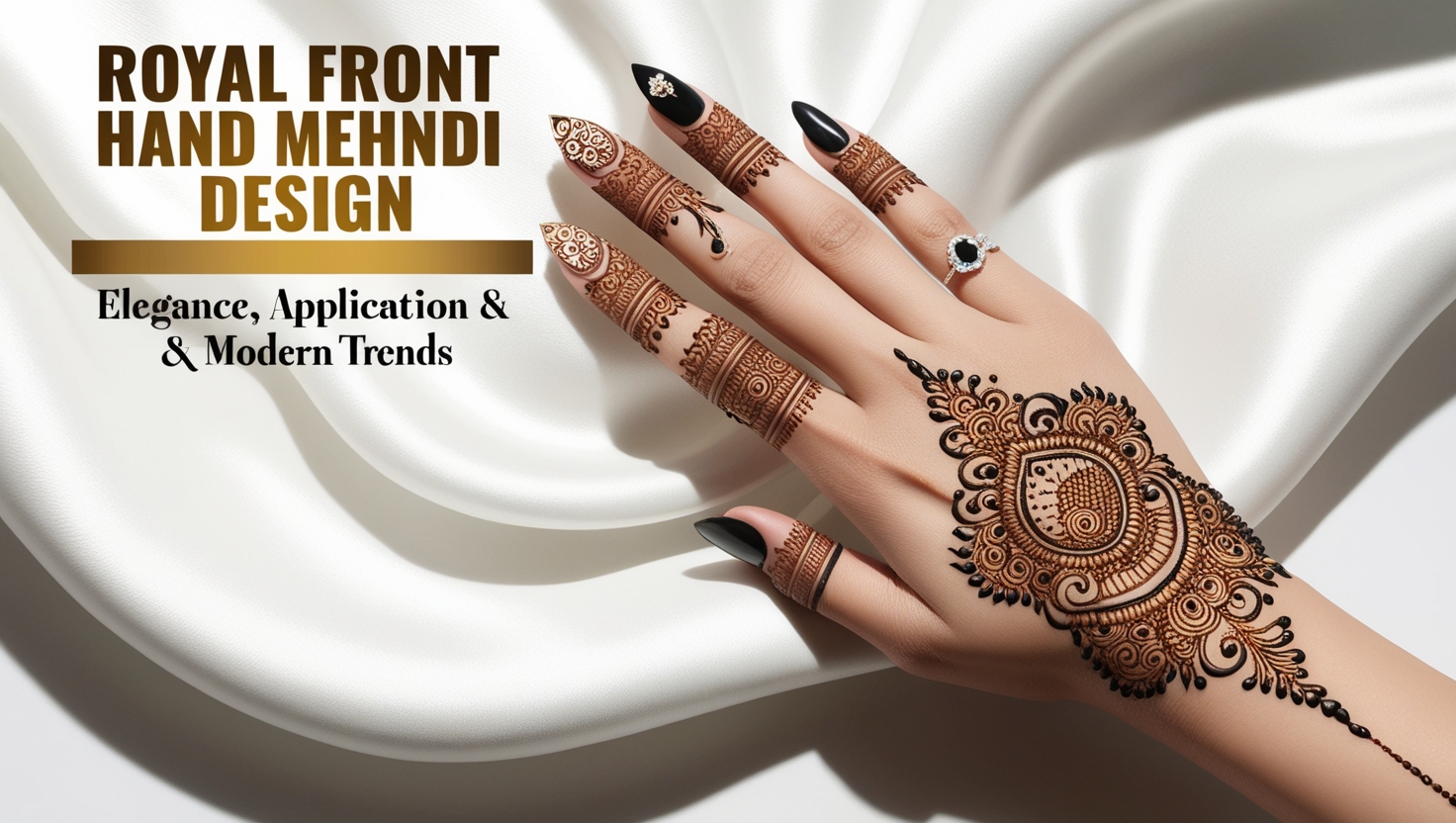Royal Front Hand Mehndi Design: Elegance, Application & Modern Trends
Mehendi or henna is a rich cultural and artistic tradition in ancient royalty courts and current wedding ceremonies. Mehndi hand designs adorn women’s beauty, prosperity, and auspiciousness. The royal front hand mehndi design differs from all the available mehndi styles because of its intricate and vibrant detailed work.
The story of royal mehendi lies in its designs, which can be narrated through the symbols of a peacock indicating beauty, paisleys speaking about fertility, and mandalas symbolizing harmony and spirituality. Each stroke and curve is carried out with great care, giving the impression of grandeur and sophistication.
This highly detailed guide talks about the intricacies of the world of royal front-hand mehendi: history, design elements, motifs, application techniques, and even modern adaptations. Whether you are a bride-to-be, a mehendi artist, or just a mehendi enthusiast, this exhaustive article will enlighten you all you want to know about this exquisite art form.
Significant Features of Royal Front Hand Mehndi Design
We will proceed to details that characterize the salient features of royal front hand mehndi design with unique characteristics that define them:
1. Intricate and Elaborate Patterns
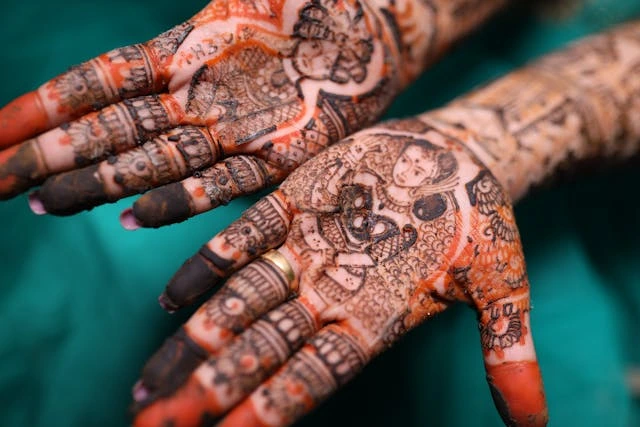
The most prominent feature of royal front-hand mehendi designs is the intricacy and majesty of their patterns. At times, the patterns cover the entire length of the hand from the wrist to the fingertips, leaving only a tiny portion of the skin open.
- Lines and swirls are so fine that intricate motifs often form, interconnecting, which flow perfectly. The entire palm area, fingers, and even parts of the wrist show a web of delicate strokes, creating a dense and cohesive look to the work.
- Pattern layering: In most royal designs, several patterns are laid above each other. This technique gives the design a rich, multi-dimensional look. It is most prominent in geometric shapes, floral arrangements, and paisleys, in which smaller motifs are placed inside larger ones.
2. Symmetry
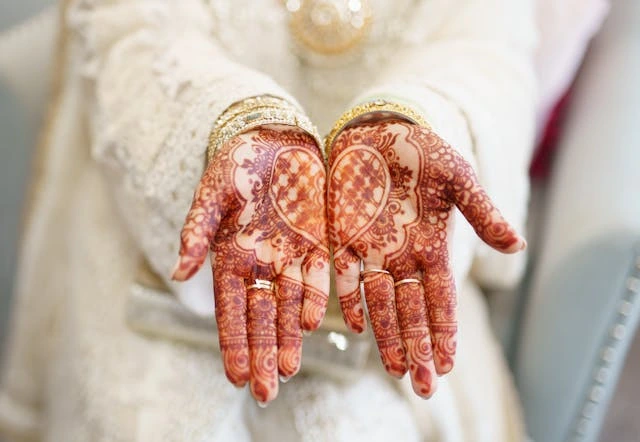
The mehendi designs of the royal front hand are integral to symmetry. Symmetry makes the design look balanced, harmonious, and elegant. An asymmetrical design means unity and perfect balance between the two hands, making them look alike in pattern and structure.
- Mirrored Design: Most royal front hand mehndi design have mirrored elements. If one hand contains a specific floral motif, the other hand’s palm contains a matching motif. The same is true for the fingers, which generally contain similar designs to add to the art.
- Visual Beauty: Beauty and perfection go hand in hand with symmetry. Mehendi enhances the design’s visual beauty because it seems refined and carefully done. The symmetry also creates balance, giving it an almost mathematical precision and adding to its royal look.
3. Precision and Fine Line Work
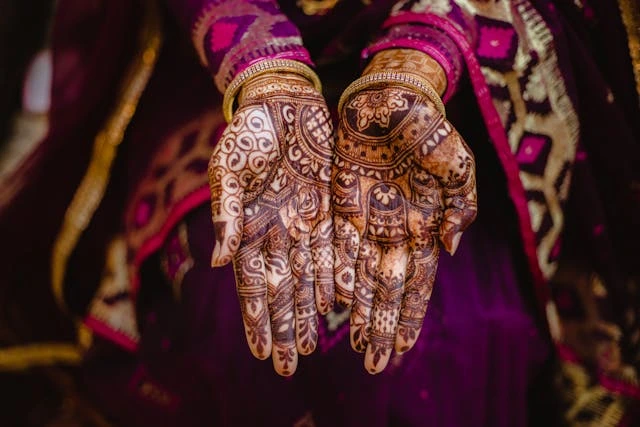
Royal front-hand mehendi designs are based on precision and fine line work. They use thin, delicate lines and details to create the desired effect.
- The base of royal mehendi is thin and sharp lines that trace the more delicate details of more prominent motifs: lines on a leaf, borders on a petal, or edges on a paisley. These are all done accurately, forming uniformity and neatness in the design.
- Exquisite detailing in mini-spaces can become a norm for royal mehendi. The gaps created between the flowers and paisleys are as tiny as little dots or spirals, and they are made in an ordered pattern of lines using a grid system.
Various Types of Motifs in Royal Front Hand Mehendi Designs
The selection of motifs is crucial to creating a balanced, elegant, and regal royal front-hand mehendi. Many common motifs are used to create these designs.
1. Paisleys or Kairis
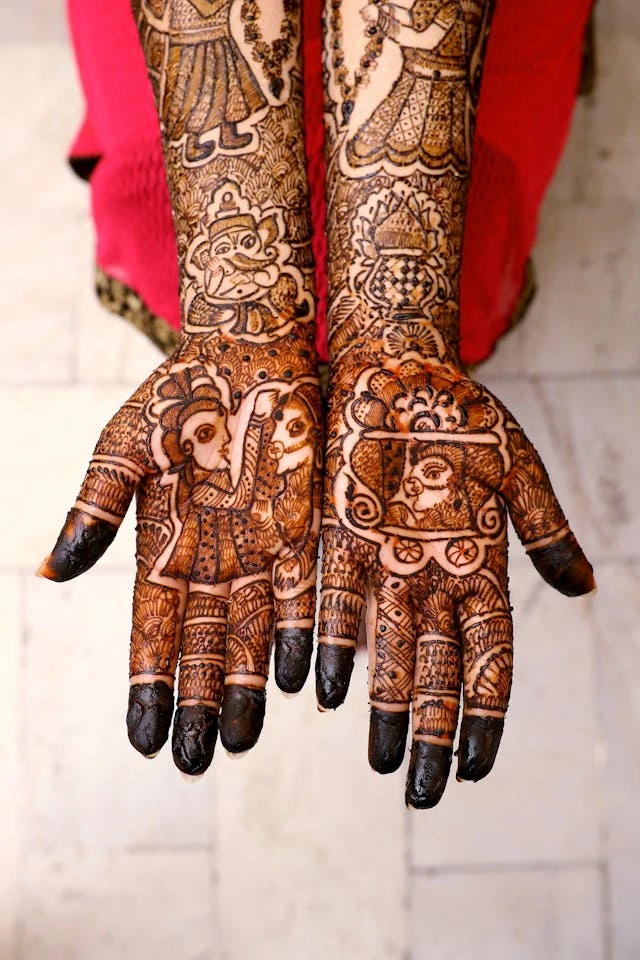
Paisleys, or the ” Kairi ” motifs, are the most classic and iconic motifs in royal mehendi designs. The teardrop shape with a curved tip is the most elegant element of mehendi.
- This detail was done elaborately for a paisley motive in mehendi drawn out with an occasional small inside teardrop. Asymmetrical palms, often characterized, have flow patterns between the Palms and fingers.
- Placement: Paisleys are applied flat on the palm and wrist, usually on the fingers. It can be used in a flowing sequence or as a single motif.
2. Mandalas
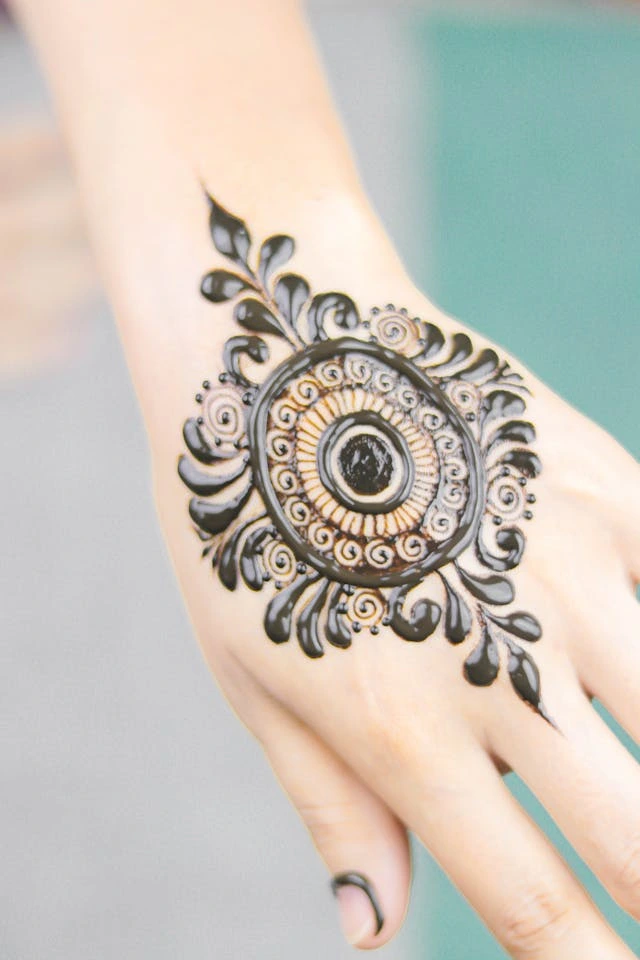
The circular pattern of mandalas is a strong symbolic feature of the royal front hand mehndi design. Deeply rooted in spirituality, it symbolizes the universe, unity, and life cycle.
- The design often focuses on a mandala at the center of the palm or wrist. Its radial symmetry makes it look nice and balanced, with an excellent draw for the center of the hand. Mandala detailing is always acceptable, with lines radiating outwards from the center, lending an appealing visual presence to the overall image.
- Placement: Mandalas can be the beautiful emphasis on the palm, sometimes even filling the spaces in the hand between the thumb and middle finger. They can even be placed at the back for added elegance.
3. Floral Motifs
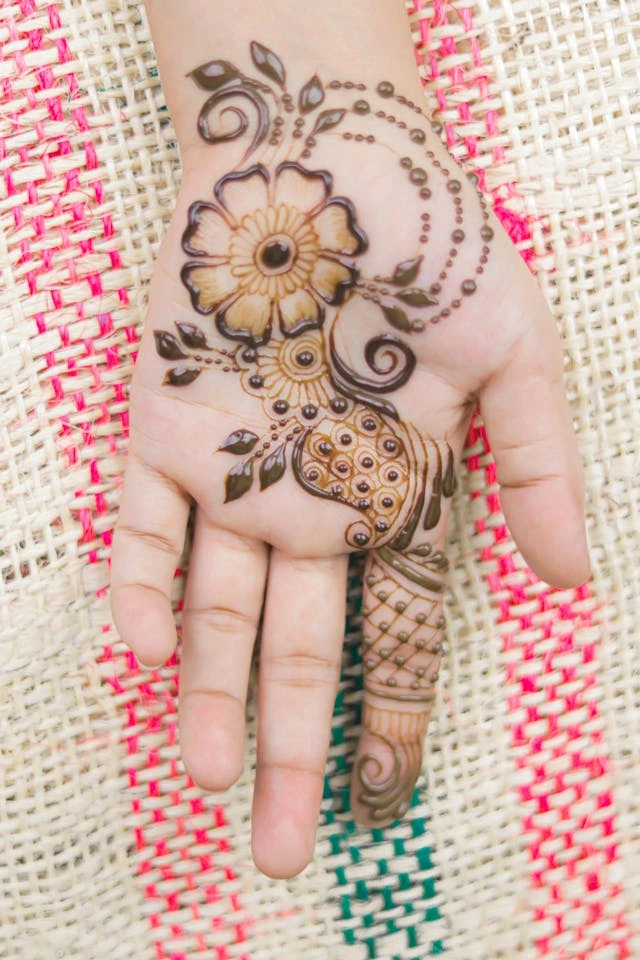
Flowers can be the natural choice of mehendi designs, bringing down softness and elegance to the whole face.
- Floral motifs are finely done. Every petal is outlined and shaded to add depth. The flowers are arranged to weave in and out of other motifs, thus giving the design a flowy and interconnected feel. Flowers like the rose, lotus, and jasmine are also common in this type of design, and each flower is designed with care to complement the natural beauty of the hand.
- Placement: Flowers can be placed on the palm, fingers, wrist, or even the back of the hand. They can frame a central motif like a mandala or paisley or serve as the central piece of the design itself.
4. Peacocks
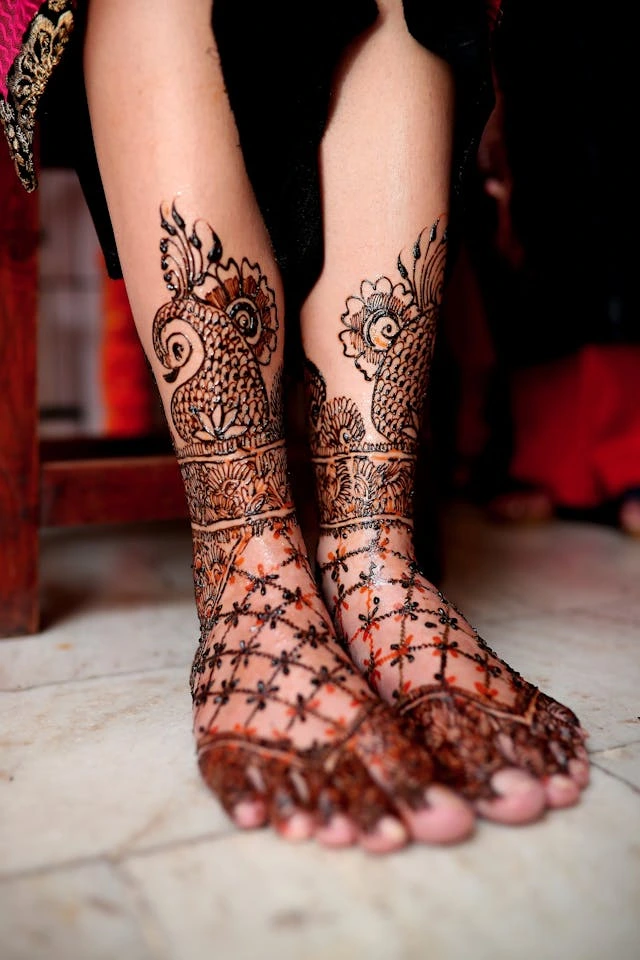
Mehendi designs usually consist of so many royal peacock designs. The royal peacock symbolizes grace, elegance, and a rather elegant touch of royal feel. Its complexity in having feathers and exquisite symbolism makes it perfect for designing something associated with luxury.
- The peacock often has decorative, detailed feathers that spiral outward from the bird’s body. To create a rich, textured look, these feathers might include smaller motifs, such as paisleys or florals. Sometimes, the peacock motif is quite large, occupying a significant amount of the palm or back of the hand; other times, it is very subtle, woven into a larger pattern.
- Placement: Peacocks are typically placed in the center of the palm. Its feathers can stretch out to either the fingers or the wrist. However, it can also be placed at the back of the hand and exude a sort of majesty.
5. Vines and Leaves
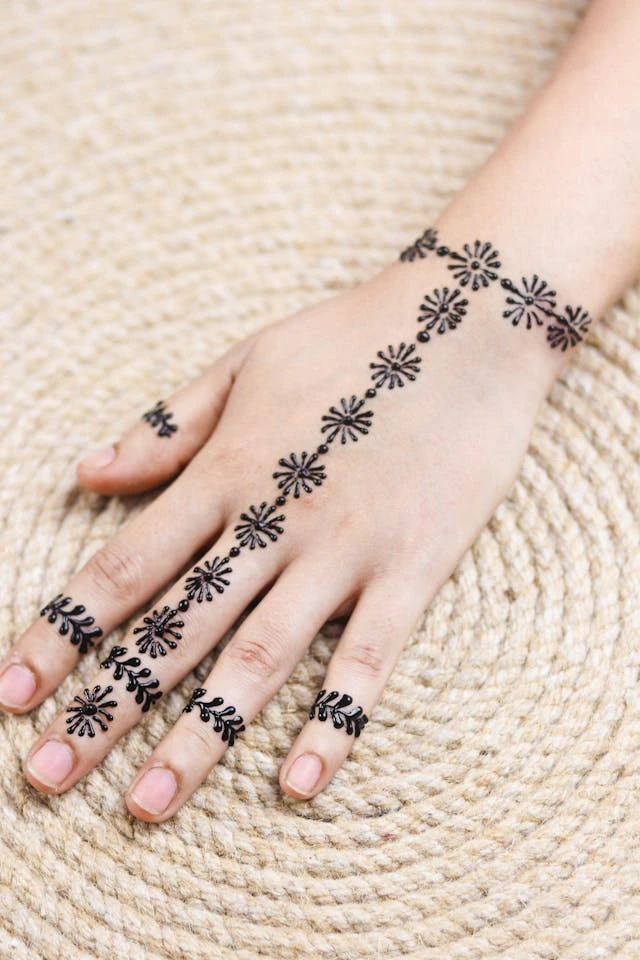
Vines and leaves will connect many parts of the royal mehendi design in a natural flow that binds the whole piece together. The motifs are an impression of organic movement and continuity.
- Royal Mehendi shows the vine as curved with leaves sticking out from its body. Curved vines sometimes pass on to join one of the higher motifs, which is how the unifying feeling occurs. The leaves contain veins in intricate detail that give them a realistic, soft look.
- Placement: Vines and leaves are used as connectors between other motifs, often running along the fingers, wrists, or the back of the hand. They can also fill in spaces, adding a natural, flowing element to the design.
Also read:
- Painting with a Twist: How Breaking the Rules on Canvas Keeps Art Alive
- Fun 10 things to draw when bored: Beginner-Friendly Instant Inspiration
- A Beginner’s Guide to the loomis method – Creating Lifelike Faces
- lippan art design and Its Evolution: A Heritage of Reflection and Creativity
- Modern texture paint designs: The Fusion of Art and Innovation
Contemporary Trends in Front Hand Mehendi Designs
Modern front-hand mehendi designs have become contemporary, fusing modern styles with traditional elements. These trends have introduced new ways of creativity, personal style, and elegance in mehendi art.
Minimalist Mehandi Designs
Minimalism is sweeping the beauty world today, and mehendi designs are no exception. Modern brides and fashion-conscious people opt for plain, clean, minimalist designs focused on delicate lines and small précised motifs.
- Fine lines and dots are two of the characteristic features of minimalist mehendi. As these designs are typically less dense, this exercise will focus on fine lines and dots intended to form delicate patterns. Beauty lies in simplicity.
- Geometric Shapes: Geometric minimalist patterns like triangles, diamonds, and squares are popular today. They give the front hand a modern, contemporary look with a touch of tradition woven into the design.
- Negative space: A modern trend in mehendi is negative space. Here, the artists do not fill the design; they expose part of the skin to produce a minimalist effect. The beauty of the hand is valuable in this regard and remains aloof.
Dark and deep Mehendi Stains
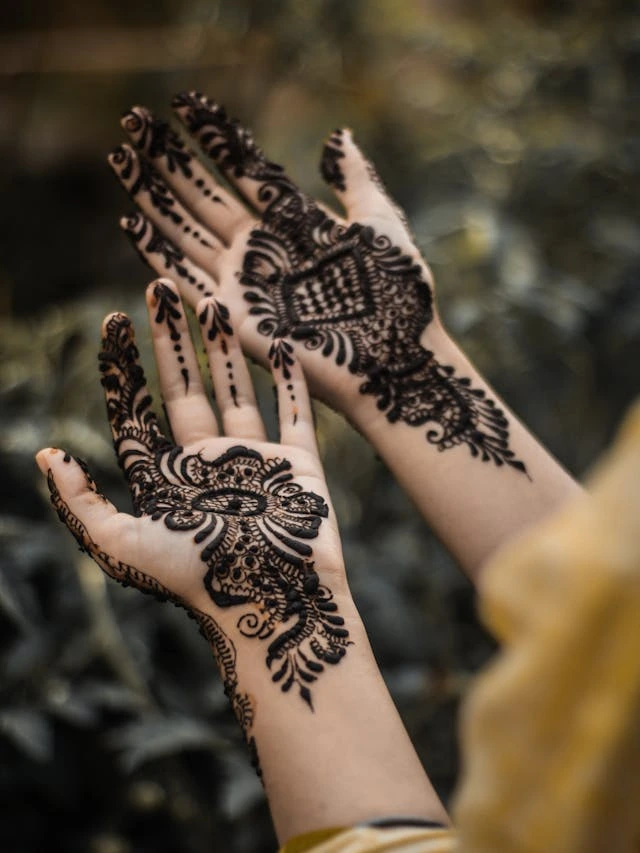
The second trick behind the modern royal front hand mehndi design is controlling this phenomenon of the stains desire for deep, dark stains. Whereas earlier designs had lighter stains, modern designs concentrate more on giving a more profound and richer color that may last longer.
- More dense lines: To achieve the dark stain, the artist applies more layers of mehendi paste and makes thicker lines. This causes a darker, more prosperous, vivid, and prominent stain.
- Dark and dramatic patterns: Dabbing adds a lot of density to the design and produces contrasts that work beautifully against the skin. This creates a beautiful, strong, bold pattern and stamps the royal seal in the royal mehendi designs.
Bridal mehendi with Personalized Design
Personalization is a significant trend in modern royal front hand mehndi design, especially bridal mehendi. Couples today seek ways to make the design more meaningful and personal by including their unique stories and symbols.
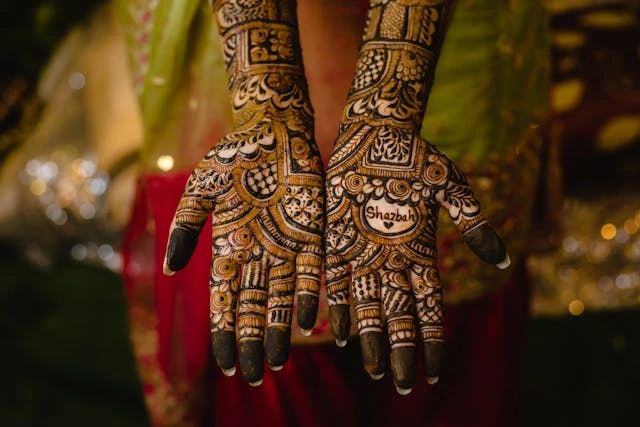
- Names or initials: Many brides use names or their partner’s initials, along th a special date, in their mehendi designs. These script writings appear the delicate patterns on wrists or fingers, and they are subtle but symbolic.
- Portraits: Expert mehendi artists can include even tiny portraits of the couple. This is very hard and requires a lot of skill, accuracy, and precision, but the results will be unique and unforgettable body art.
- Familiar elements from experiences: The couple can include symbols or images representing everyday experiences or interests. These can range from a favorite flower to a significant point of interest from a memorable trip to both partners.
- Quotes and verses: They can also include meaningful quotes or verses from literature, religious texts, or even songs that add a poetic and romantic effect to the design.
Tattoo-Style Mehendi: Inspired by modern tattoos, this style of mehendi features bold black lines and ink tattoos. Sharp shapes, intricate details, and even more edgy, non-traditional patterns are focused on in these designs. It is often used for those who prefer a bolder, more contemporary look.
Application of Royal Front Hand Mehendi Designs
The process of applying royal front hand mehndi design is quite complicated and requires good accuracy. It is as follows:
- Clean the hands, exfoliate, and dry so the paste will stick and stain well.
- Delicate point cones are used to create detailed lines and soft patterns. Dense in application because the paste is very thick to coat much of the skin
- Once the paste has dried, apply some sugar and lemon mix for darkness over the stain.
- Scrape off the dry paste carefully with just oil on it, keeping moisture away from it so it remains intense.
- Avoid water for 12-24 hours and apply oil constantly to extend the life of the design and maintain the stain dark.
Tips to Maintain the Mehendi Color Darker
These are helpful tips for achieving and maintaining darkness if you want your royal front hand mehndi design stain to be dark, rich, and intense.
- The longer you apply the paste, the darker the stain will be. For a deeper stain, leave the mehendi paste for at least 6-8 hours or overnight.
- Do not wash your hands for 12-24 hours after the paste is scraped off so the color can get deep.
- Once the paste dries, add sugar and lemon juice. This will help the mehendi stay longer on the hands and deepen the color.
- Remove the paste, then apply heat by placing cloves beside your hands or using warm cloths. Heat increases the depth of the stain.
- Following removal of the paste, nourish your skin and intensify the color using coconut or olive oil.
- Do not rough handle your hands; the color might fade quickly due to excessive friction.
- Do not use strong soaps or chemicals on your hands. They bleach the mehendi stain, which fades quickly.
Conclusion
The royal front hand mehndi design balances tradition and artistry beautifully, transforming hands into actual works of art. It ensures a regal look with meticulous attention to detail, symmetry, and classic motifs for any occasion. Trends and proper aftercare ensure that the mehendi stays bright and long-lasting, creating a timelessness in this art form as it continues to evolve with personal preferences and creativity.
FAQs
How long will the royal front-hand mehendi last?
Typically, it lasts 1 to 2 weeks, but this is because the aftercare and skin types may vary. Sometimes, it darkens within the first 24-48 hours and gradually fades out.
Can I make my mehendi dry faster?
Alternatively, you can wait in a warm, dry location or gently use a fan to speed up the process. Do not apply heat to the mehendi paste, which affects the color.
How can you darken the mehendi stain?
To get a deeper stain, apply the mehendi for as long as you can (6-8 hours), apply the sugar-lemon mixture after it dries, and ensure no water is used on you for 12-24 hours. Applying oil once the paste is removed may also increase the color.
Can I change a royal front hand mehendi design?
Yes, royal mehendi designs can be personalized with unique motifs, initials, or symbols that reflect personal preferences or the theme of an event, like a wedding or festival.
How long will my mehendi design last?
To keep the stain of mehendi designs, one has to avoid any contact with water for the initial 24 hours, apply oil regularly to moisten the skin, and cannot use harsh chemicals or scrub his hands to last longer.

